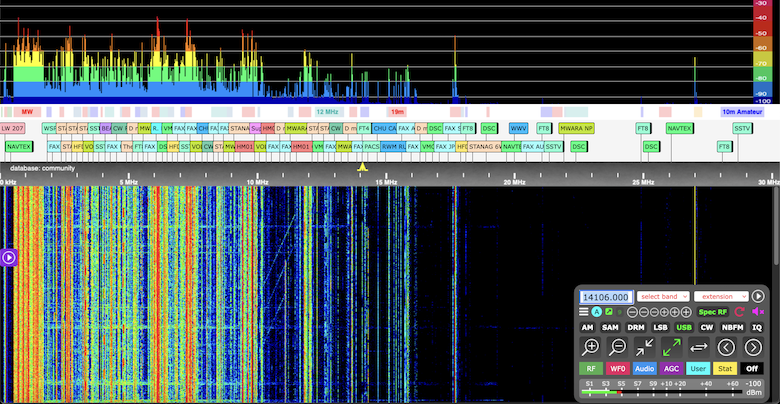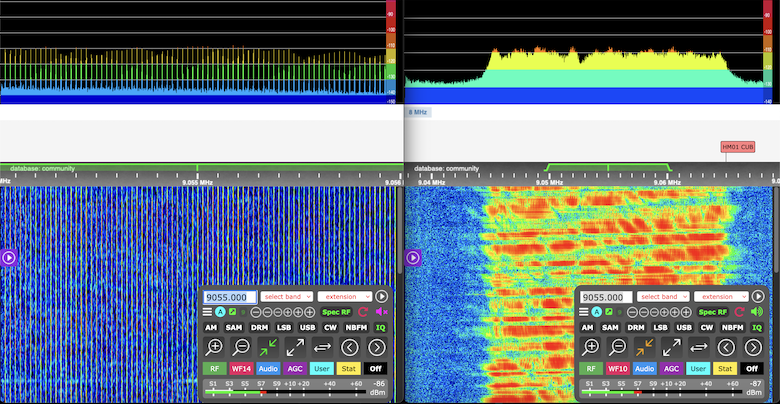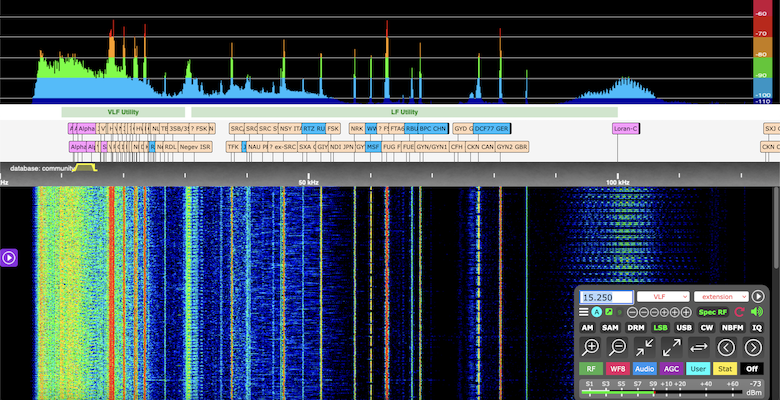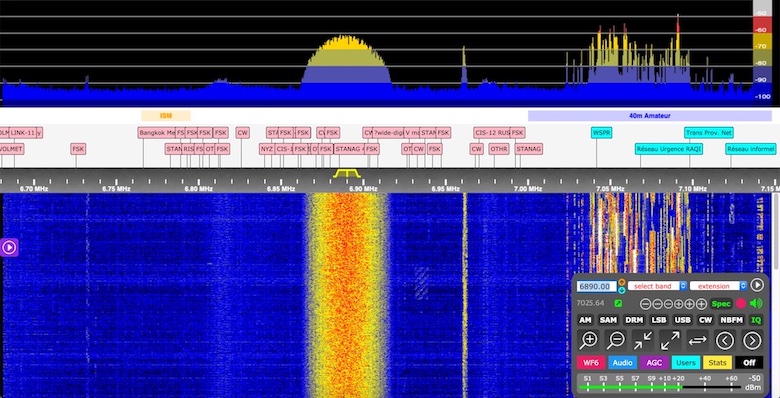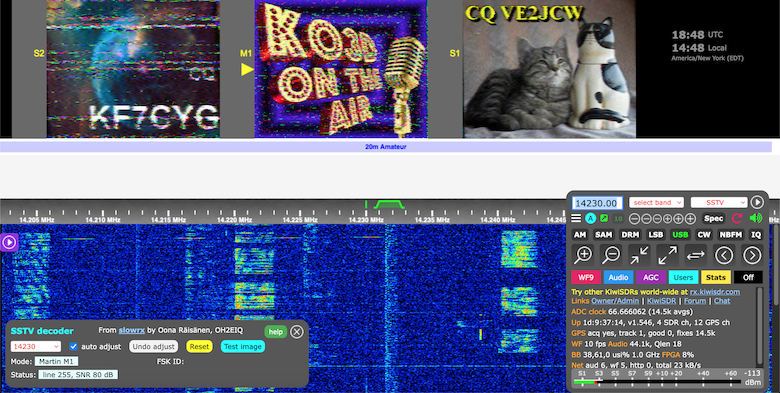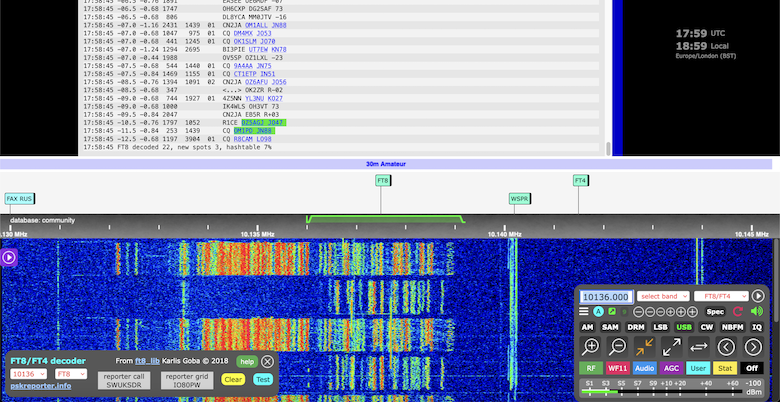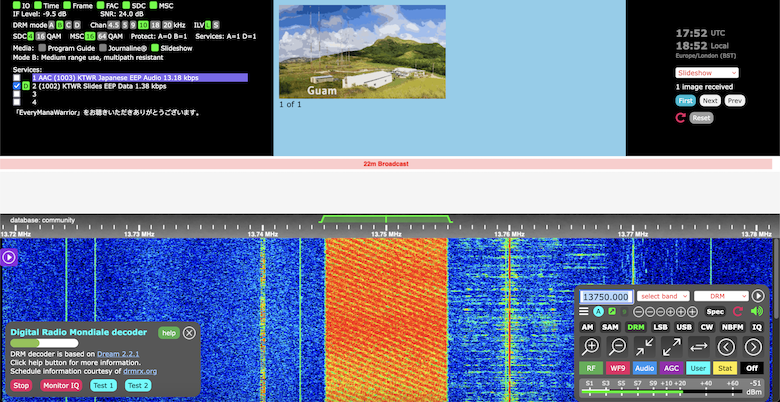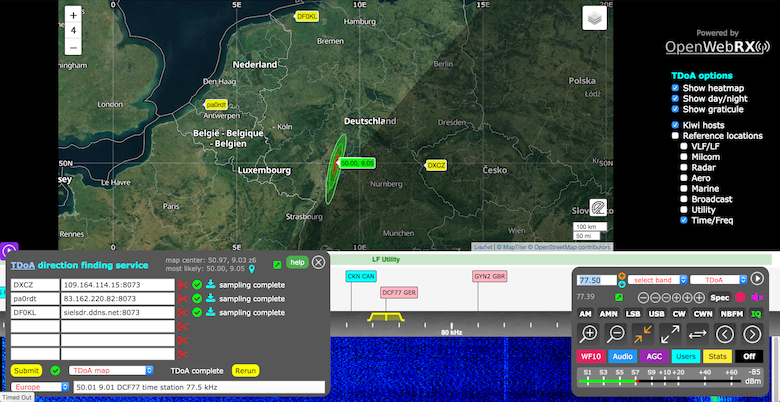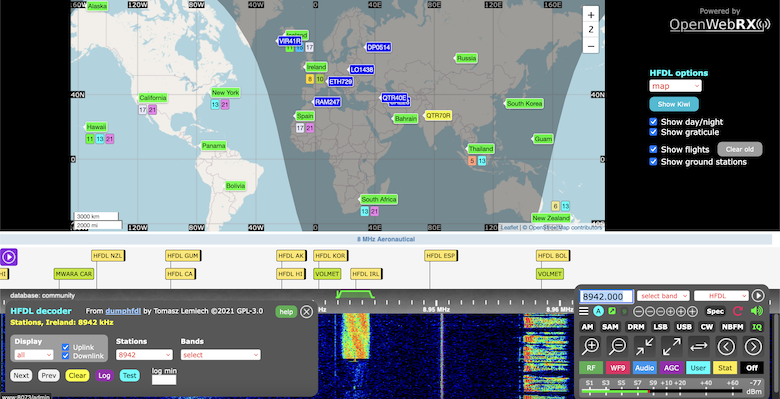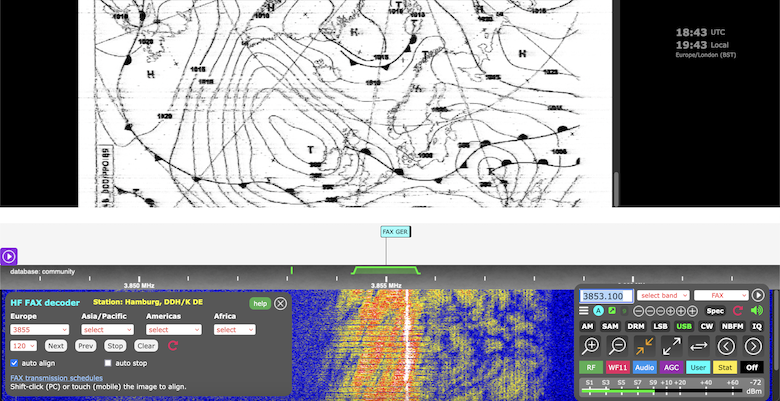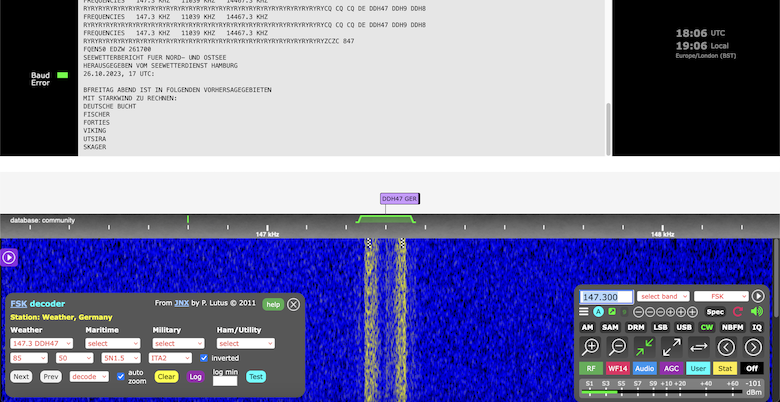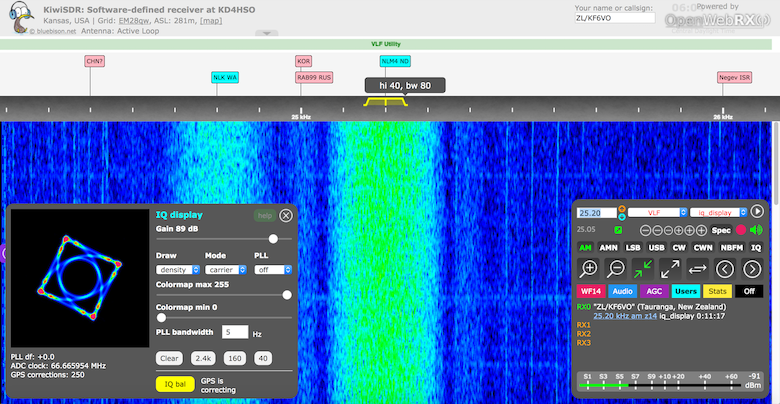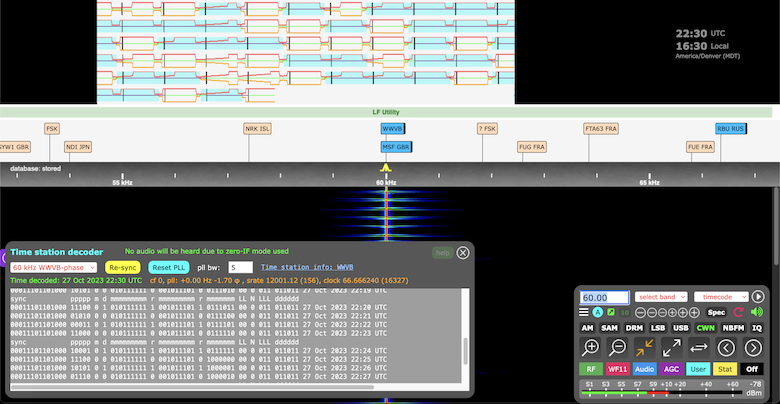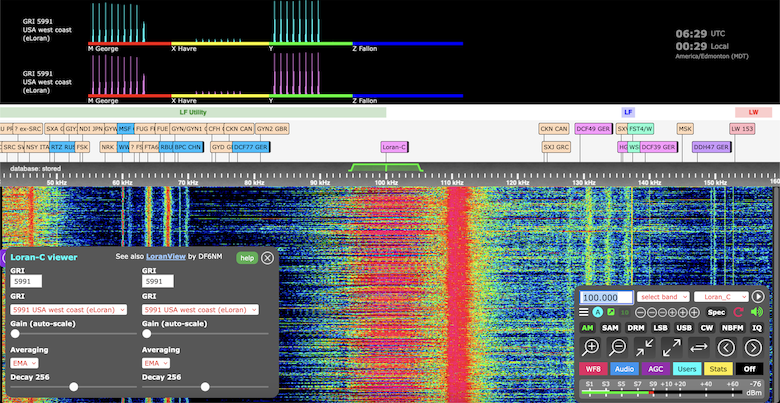[updated 27 October 2023]
Click image for full size.
An add-on board ("cape") that turns your Beagle into a web-accessible shortwave receiver.
- Listen live: List, Map
- Project webpage
- Operating information: installation, operation, FAQ
- Latest source code commits
- Design review document
- Schematic
This SDR is a bit different. It has a web interface that can be used by up to four separate listeners. Each one listening and tuning an independent frequency simultaneously. See the screenshots below.
- SDR covering the 10 kHz to 30 MHz (VLF-HF) spectrum.
- Web interface based on OpenWebRX from András Retzler, HA7ILM.
- Integrated software-defined GPS receiver from Andrew Holme's Homemade GPS Receiver.
- LTC/Analog Devices 14-bit 65 MHz ADC.
- Xilinx/AMD Artix-7 A35 FPGA.
- Maxim/Analog Devices MAX2769B GPS front-end.
- Open Source.
- Browser-based interface allowing multiple simultaneous user web connections.
- Each connection tunes an independent receiver channel over the entire spectrum.
- Waterfall tunes independently of audio and includes zooming and panning.
- Multi-channel, parallel DDC design using bit-width optimized CIC filters.
- Built-in signal decoding: CW DRM FAX FSK FT8 HFDL IBP NAVTEX SSTV TDoA WSPR and more.
- Good performance at VLF/LF since we personally spend time monitoring those frequencies.
- Automatic frequency calibration via received GPS timing.
- Easy hardware and software setup. Browser-based configuration interface.
- KiwiSDR 2 features:
- 0 - 31.5 dB electronic attenuator.
- External ADC clock input.
- Built-in self test for checking the RF path.
Give the live receivers a try at the links above. You'll need a recent version of a modern web browser that supports HTML5. The web interface works, with some problems, on mobile devices. But there is no mobile version of the interface yet.
A second generation device, the KiwiSDR 2, is now in production.
We wanted to design an SDR that provides certain features, at a low price point, that we felt weren't covered by current devices. The SDR must be web-accessible and simple to setup and use. We also wanted to provide a self-contained platform for experimentation with SDR and GPS techniques. The TDoA extension is an example.
Most importantly, we wanted to see a significant number of web-enabled, wide-band SDRs deployed in diverse locations world-wide because that makes possible some really interesting applications and experiments. Over 600 Kiwis are publicly available currently.
Users can purchase just the KiwiSDR board or a complete unit consisting of the board, BeagleBone Green (software pre-installed), enclosure, and GPS antenna (see here). The software will try to automatically open up an incoming port through whatever Internet firewall/router may exist on the local network, but the user may have to perform this step manually. A reverse proxy solution is available.
An antenna solution must be provided. An adequate power supply (e.g. 5V @ 2A) will also be required.
Four channels of audio and waterfall streamed over the Internet 24/7 requires about 30 GB per month. This is a common cap for many residential broadband plans. An automatic dynamic-DNS system is already part of the software so a web link to the SDR is immediately available with no configuration. Of course the system can be configured to only allow connections from the local network and ignore Internet connection requests.
Click images for full size.
Here is z14 (2 kHz span) on the left showing the 25 Hz sweep rate of an Over the Horizon Radar (OTHR) which is very helpful with signal identification. On the right is z10 showing the full passband.
Especially with the right antenna and after eliminating noise sources. When you zoom in further the labels below the spectrum clearly identify all these signals.
Here is ham slow-scan television decoding.
Note FT8 pileup 3 kHz below working YJ0TT Vanuatu.
Multiple Kiwis, assisted by their built-in GPS for accurate timing, can cooperate to approximately locate signals. LF time station DCF77 77.5 kHz in Germany accurately located.
Aircraft to ground station (green) data exchange system. Includes message decoding and aircraft positions (blue) on a map.
IQ display showing the QPSK modulation of VLF station NLM4 North Dakota (25.2 kHz) as received in Kansas.
Decoding of time station WWVB (60 kHz, phase modulation) in Colorado.
When the Russian VLF Alpha navigation system is active there's a special decoder for that too.
A simple monitor for the Loran-C and under-development eLoran system. A recent West Coast USA eLoran test shown here.
[end-of-document]
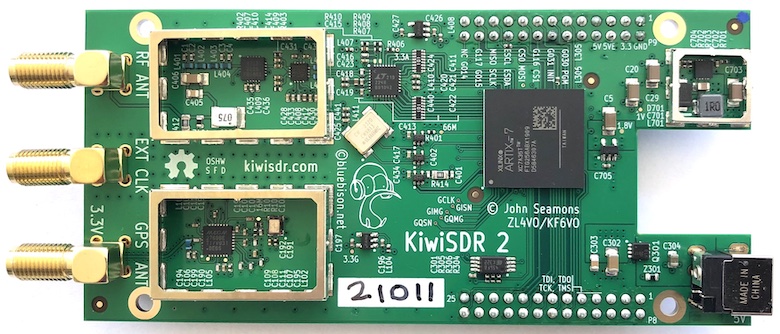
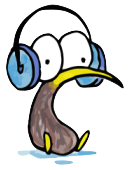 © bluebison.net
© bluebison.net